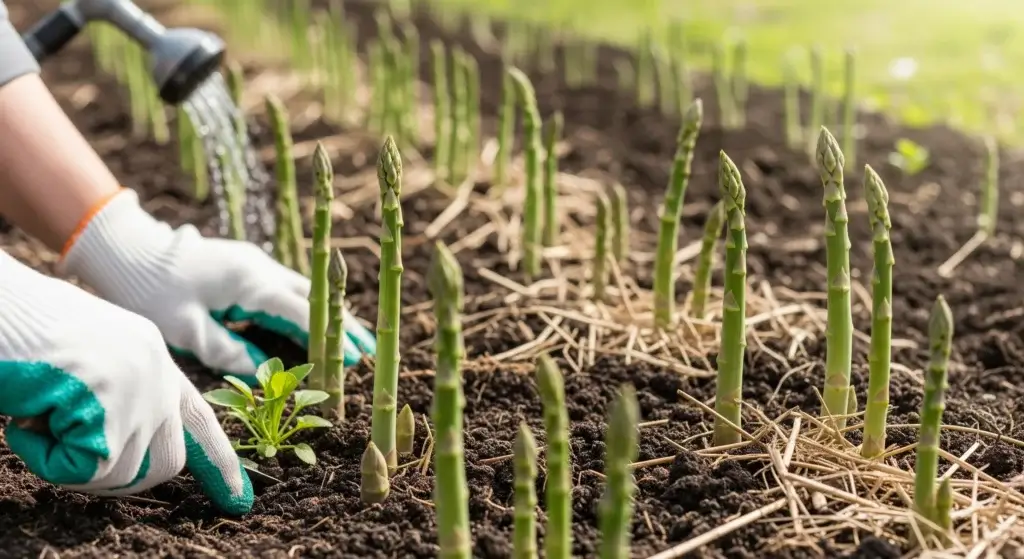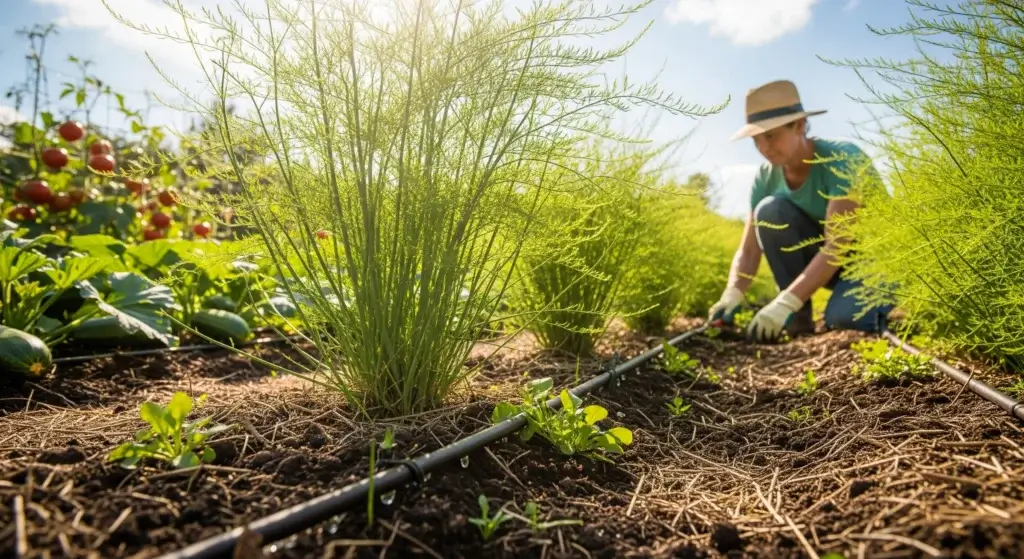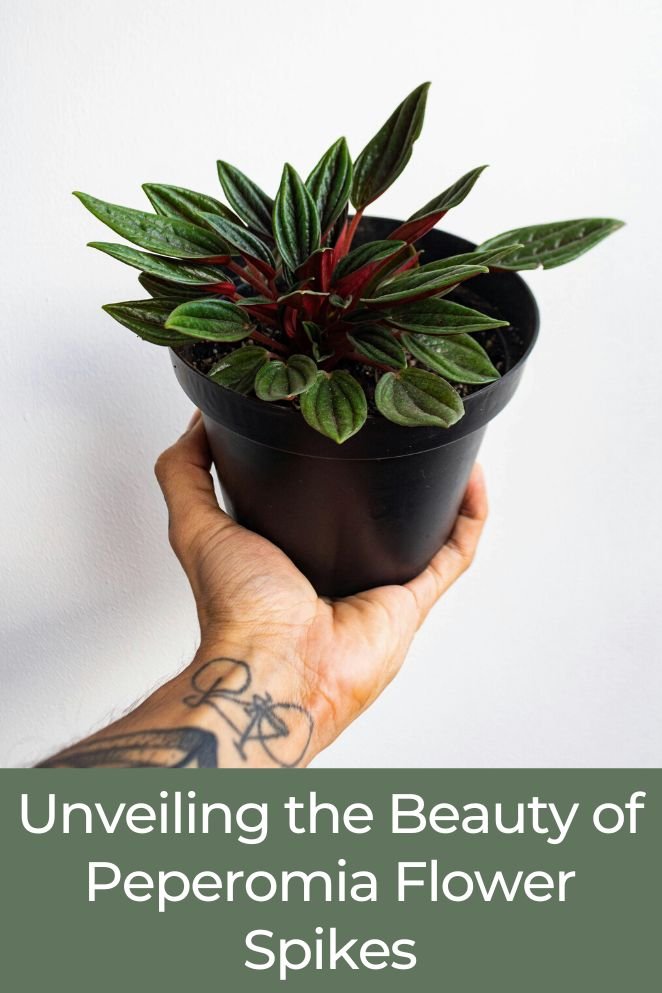
In this comprehensive guide, we’ll delve into everything you need to know about these unique features of peperomia plants, from understanding their anatomy to providing the best care for vibrant blooms.
About Peperomia
Peperomia plants, also known as radiator plants, are beloved for their diverse foliage and easy-care nature.
They’re native to tropical and subtropical regions, primarily found in Mexico, South America, and the Caribbean.
With over 1,000 species to explore, peperomias offer a wide range of shapes, sizes, and colors, making them a favorite among indoor plant enthusiasts.
- Read also: Mastering Dragon Wing Begonia Care
- Read also: A Guide to Dracaena Colorama Care
Care Tips for Healthy Peperomia
Lighting
Place your Peperomia in a spot with bright, indirect light. Direct sunlight can scorch its delicate leaves, so filtered sunlight through curtains or blinds is ideal.
If you notice your Peperomia’s leaves becoming pale or leggy, it might need more light.
On the other hand, if the leaves are turning brown or yellow, they could be getting too much direct sun.
Watering
Water your Peperomia moderately, allowing the top inch or two of soil to dry out between waterings.
Overwatering can lead to root rot, so it’s essential to avoid keeping the soil soggy.
Check the moisture level by sticking your finger into the soil. If it feels dry, it’s time to water.
Adjust the watering frequency based on the season and environmental conditions.
Humidity
Peperomias generally prefer moderate to high humidity levels, especially those with succulent-like leaves.
You can increase humidity by misting the plant regularly or placing a tray of water near it.
In drier environments, consider using a humidifier to maintain optimal humidity levels.
This can prevent the plant’s leaves from drying out and becoming crispy.
Soil
Use well-draining soil for your Peperomia to prevent waterlogging, which can lead to root rot.
A mix of peat moss, perlite, and coarse sand works well.
Fertilization
Fertilize sparingly during the growing season, typically from spring to early fall.
Use a balanced, water-soluble fertilizer diluted to half strength to avoid overfeeding and burning the plant’s roots.
Avoid fertilizing during the winter months when the plant is in a dormant phase.
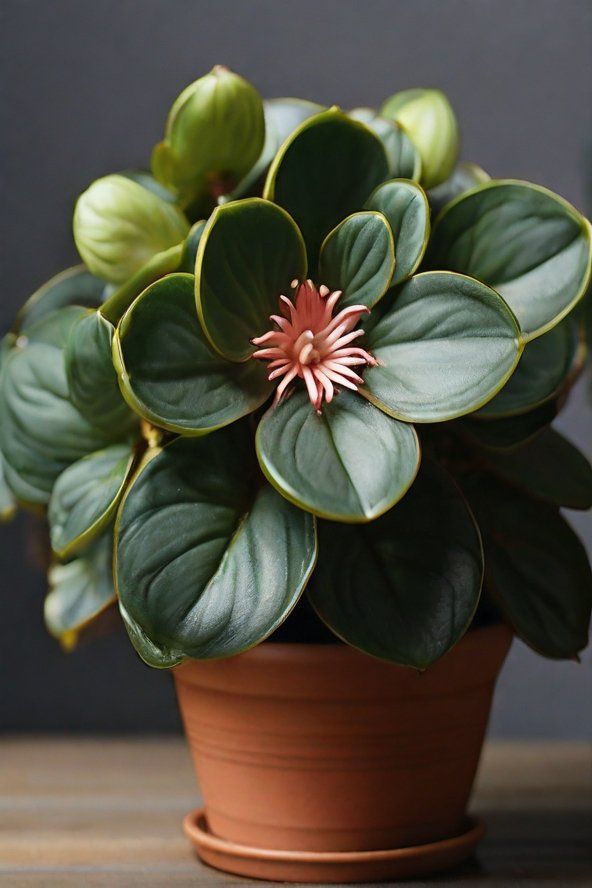
Unique Features of Peperomia
While not known for their showy blooms, some peperomia do produce small, spiky flower spikes that add to their charm.
These flowers are not particularly fragrant, but they hold interest, especially when viewed closely.
Additionally, peperomia are generally non-toxic to pets, making them a safe choice for pet-friendly homes.
What are Peperomia Flower Spikes?
Peperomia flower spikes are slender, upright structures that emerge from the center of the plant, typically during the flowering season.
While not all Peperomia varieties produce noticeable flowers, those that do often display small, inconspicuous blooms along these spikes.
Here are some key points about Peperomia flower spikes:
Appearance
Peperomia flower spikes are usually slender and upright, varying in height depending on the species and variety.
The spikes may emerge from the center of the plant or from the leaf axils, where the leaves meet the stem.
Blooms
The flowers on Peperomia spikes are often inconspicuous, with some species producing tiny, tubular flowers that may not be readily noticeable to the naked eye.
Despite their small size, Peperomia flowers can add a delicate beauty to the plant and may be fragrant in some species.
Flowers on Peperomia spikes can vary in color, including white, cream, green, or pink, depending on the species.
Flowering in Peperomias can also indicate that the plant is healthy and thriving under its current care conditions.
Duration
Peperomia flower spikes can remain on the plant for several weeks to months, depending on environmental conditions and the specific species.
After flowering, the spikes may eventually dry up and wither away, or they may persist on the plant until new growth emerges.
Propagation use
Peperomia flower spikes may produce seeds after flowering, which can be collected and used for propagation if you’re interested in growing new plants.
Additionally, some Peperomia species can be propagated from stem or leaf cuttings, allowing you to clone the plant without relying solely on seeds.
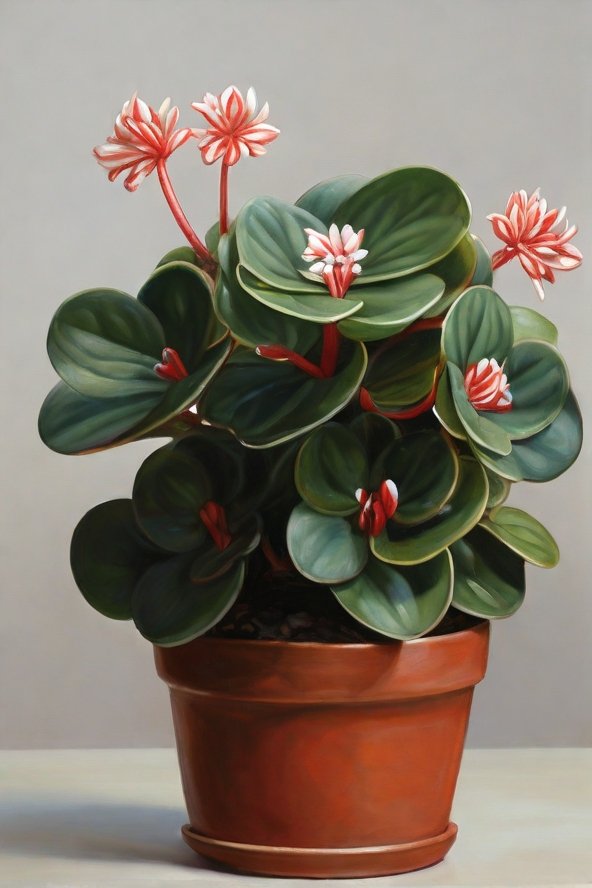
What Can I Do About Spikes On My Peperomia Plant?
If you notice spikes on your Peperomia plant, there are a few actions you can take depending on your preferences and the specific characteristics of your plant:
Leave them be
If you enjoy the appearance of the spikes and the potential for flowers, you can simply leave them on the plant.
Peperomia spikes can add visual interest and may produce small, inconspicuous blooms that contribute to the plant’s overall appeal. Here’s why:
They’re harmless
Peperomia flower spikes are part of the natural growth process and pose no harm to the plant.
In fact, they’re a sign that your plant is healthy and happy!
They’re temporary
The spikes eventually mature and drop off on their own, typically within a few months.
So, if you’re not a fan of their look, just be patient and they’ll disappear naturally.
They don’t drain energy
Unlike the showy flowers of some plants, Peperomia flower spikes don’t require significant energy from the plant.
So, leaving them on won’t harm your Peperomia’s overall health.
Prune them off
If you prefer a neater appearance or if the spikes are detracting from the overall look of the plant, you can prune them off using clean, sharp scissors or pruning shears.
Trim the spikes back to the base of the plant or where they emerge from the stem or leaf axils.
Pruning off the spikes won’t harm the plant and can help redirect its energy towards other growth, such as producing new leaves or stems.
Why Peperomia Plants May Not Produce Flower Spikes?
Not all Peperomia flowers
Some species flower readily, while others rarely or never do. So, don’t be alarmed if your plant doesn’t have any spikes.
Adjust Care Conditions
Sometimes, the presence or absence of spikes on Peperomia plants can be influenced by environmental factors such as light, temperature, and humidity.
If your plant isn’t producing spikes or flowers, consider adjusting its care conditions to see if it encourages flowering.
Ensure the plant is receiving adequate light, avoid overwatering, and maintain moderate to high humidity levels if your Peperomia has succulent-like leaves.
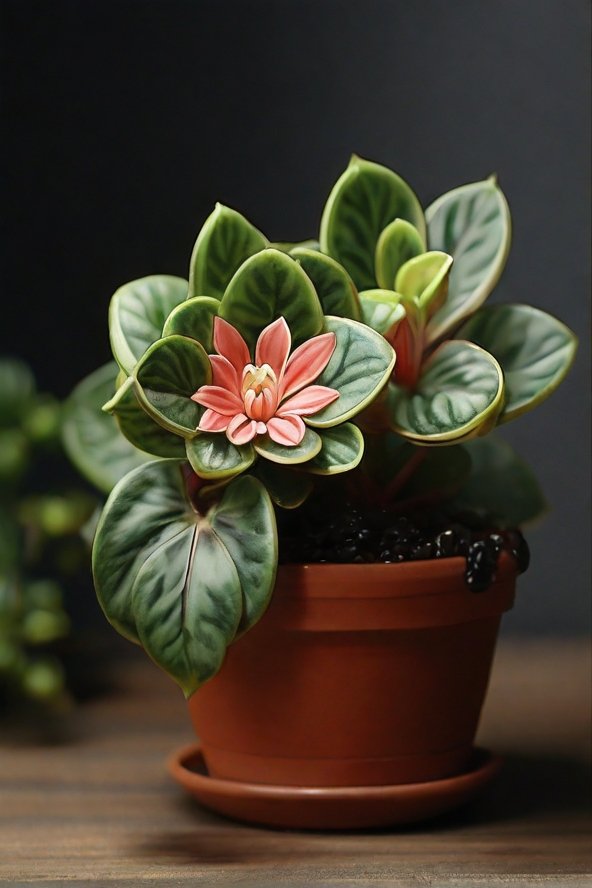
- Read also: A Guide on How to Make Your Spider Plant Bushier
- Read also: A Guide on How to Care for Snake Plants Outdoors
Conclusion
Peperomia flower spikes are truly a sight to behold, adding a touch of elegance and charm to any indoor space.
By understanding their unique features and providing the best care, you can enjoy vibrant blooms year-round.
So go ahead, embrace the beauty of peperomia plants, and watch as their flower spikes steal the spotlight!
FAQs
No, not all peperomia species produce flower spikes. Some varieties are grown primarily for their foliage and do not typically bloom indoors.
The frequency of flowering can vary depending on the species and growing conditions. Some peperomias may produce flowers multiple times throughout the year, while others may bloom less frequently.
While it’s possible to propagate some peperomia species from leaf cuttings or stem cuttings, propagating from flower spikes is less common and may not always be successful. It’s best to rely on traditional propagation methods for optimal results.

